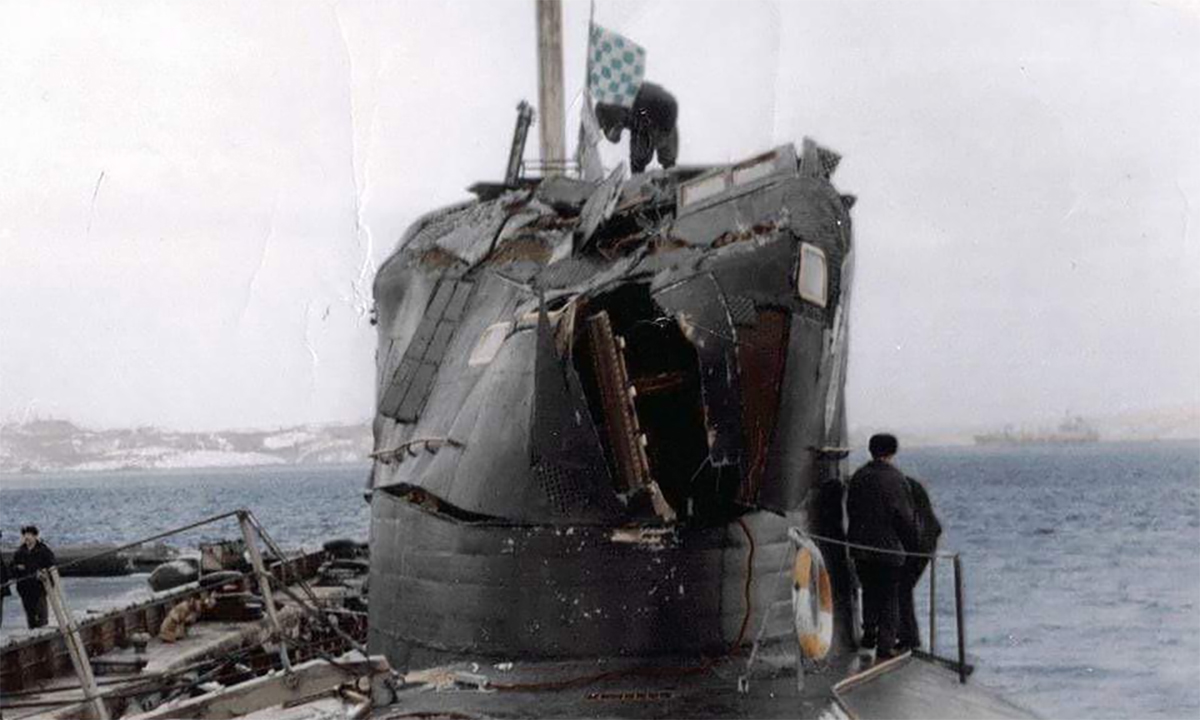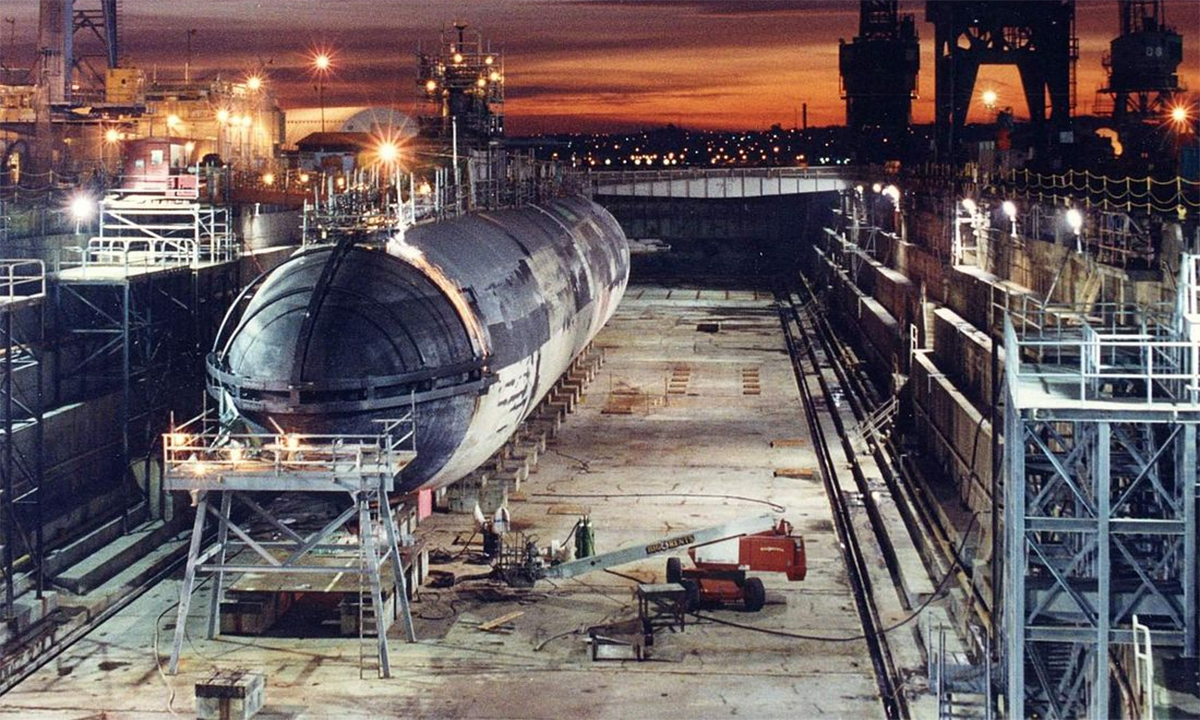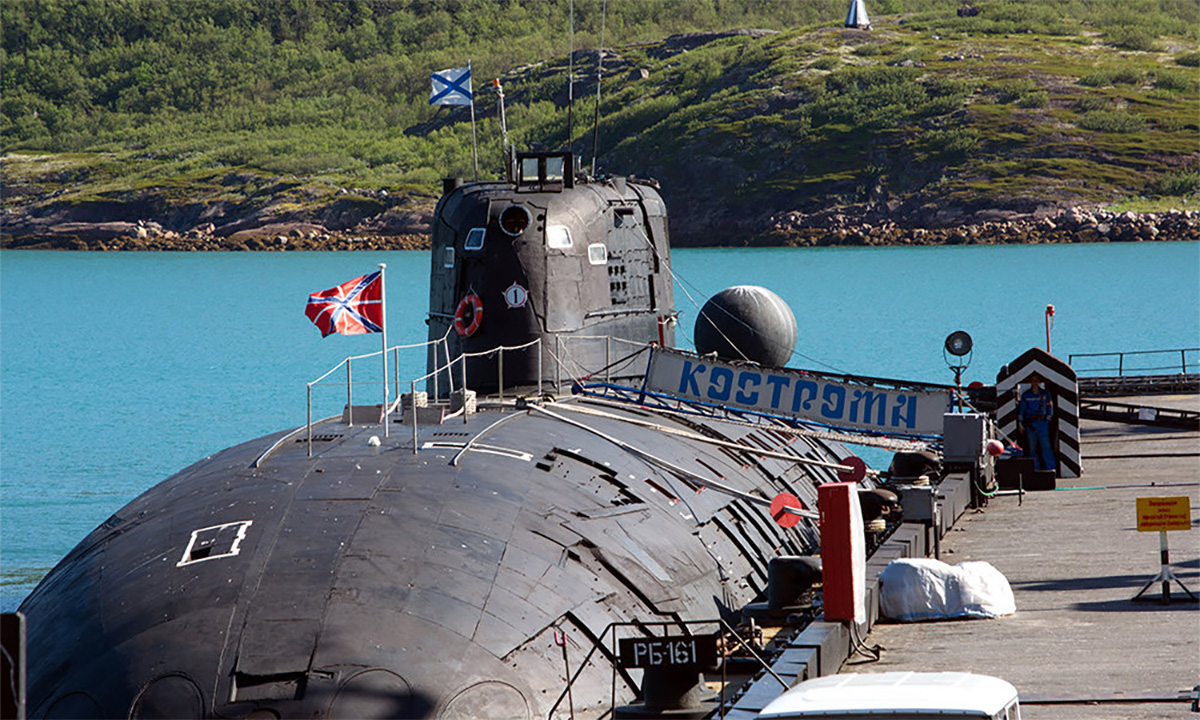On 11/2/1992, the US nuclear-powered attack submarine USS Baton Rouge was conducting a clandestine mission at a depth of 20 meters in the shallow waters off Kildin Island, only about 22 km from Russia's Murmansk naval base. The Soviet Union had dissolved a little over two months earlier, but the US still wanted to monitor the activities of the Russian Navy, which had inherited much of the Soviet Navy's powerful arsenal.
US officials have never publicly disclosed the true nature of the USS Baton Rouge's mission off Murmansk.
US media speculated it might have been monitoring radio communications between Russian naval bases or deploying and retrieving intelligence equipment. Many Russian sources said that Moscow's and Washington's submarines were playing cat and mouse, a theory also supported by some Western sources.
 |
The Kostroma's conning tower after the collision with the USS Baton Rouge in February 1992. Photo: Russian Navy |
The Kostroma's conning tower after the collision with the USS Baton Rouge in February 1992. Photo: Russian Navy
At approximately 8:16 a.m., the Baton Rouge was suddenly struck from below by a large object, tearing open its underbelly and puncturing its port ballast tank. The cause was determined to be the Russian nuclear-powered attack submarine B-276 Kostroma (then known as K-276 Krab), which had surfaced rapidly directly beneath the US vessel.
The Kostroma's conning tower pierced the Baton Rouge's hull and was severely crushed and deformed. The Kostroma's titanium hull then scraped against the Baton Rouge, peeling off sections of the American submarine's anechoic tiles.
Neither the Kostroma nor the USS Baton Rouge was carrying nuclear weapons at the time of the collision. The reactors of both vessels remained intact, and the accident didn't cause any radiation leaks into the surrounding waters.
Mikhail Kuznetsov, former commander of the 6th Submarine Division of Russia's Northern Fleet, attributed the collision to "inaccurate actions by the American crew".
"USS Baton Rouge's captain, Gordon Kremer, miscalculated his position, leading to the collision with the Kostroma as it surfaced. Notably, the USS Baton Rouge immediately left the scene, and the US Navy denied the incident for a considerable period," he said.
 |
The USS Baton Rouge in dry dock at Mare Island, USA, in February 1995. Photo: US Navy |
The USS Baton Rouge in dry dock at Mare Island, USA, in February 1995. Photo: US Navy
Experts believe the incident may have been caused by the shallow waters off Kildin Island, which hindered the sonar systems on both submarines from detecting each other.
Waves in shallow water create ten times more background noise than in deep water, making it extremely difficult for sonar operators to distinguish the sound of a submarine's propeller from other noises. The propeller noise itself also reflects off the seabed and surface, making it hard for operators to isolate it from the background sounds.
Submarines can use active sonar to detect other submarines, significantly increasing their detection range compared to passive sonar. However, this method easily reveals the submarine's location, making it unsuitable for surveillance and intelligence gathering.
Neither the USS Baton Rouge nor the Kostroma had active sonar engaged at the time, and their passive sonar systems failed to detect each other in the noisy shallows. As a result, the two submarines, each nearly the length of a football field, collided, only becoming aware of each other after the impact.
The collision triggered the first diplomatic incident between the two countries. Russia claimed the USS Baton Rouge had violated its territorial waters by entering the 12-nautical-mile (22 km) zone measured from the baseline connecting the shores of Kola Bay. However, the US didn't recognize this calculation, asserting that their submarine was operating in international waters outside Russia's territorial sea.
Then-US Secretary of State James Baker had to meet directly with President Boris Yeltsin to assure him that the US would reduce its reconnaissance activities off Russia's coast. However, this commitment seems to have been short-lived, as US and Russian submarines collided again off the Kola Peninsula in 3/1993.
 |
The Kostroma with a star and the number 1 on its conning tower. Photo: RG |
The Kostroma with a star and the number 1 on its conning tower. Photo: RG
At the time of the collision, the USS Baton Rouge had been in service with the US Navy for only 15 years. However, the cost of repairing the vessel and the scheduled nuclear refueling was deemed too high, exceeding budget projections, prompting the US Navy to decommission and dismantle the submarine in 1993.
The Kostroma received a new conning tower and topside equipment. After repairs were completed, the Kostroma returned to service in June 1992 and remains in service with the Russian Navy to this day.
The Kostroma's conning tower was also painted with a star and the number 1, a symbol used since World War II to signify the sinking or disabling of an enemy vessel.
Nguyen Tien (RG, National Interest, AP)












